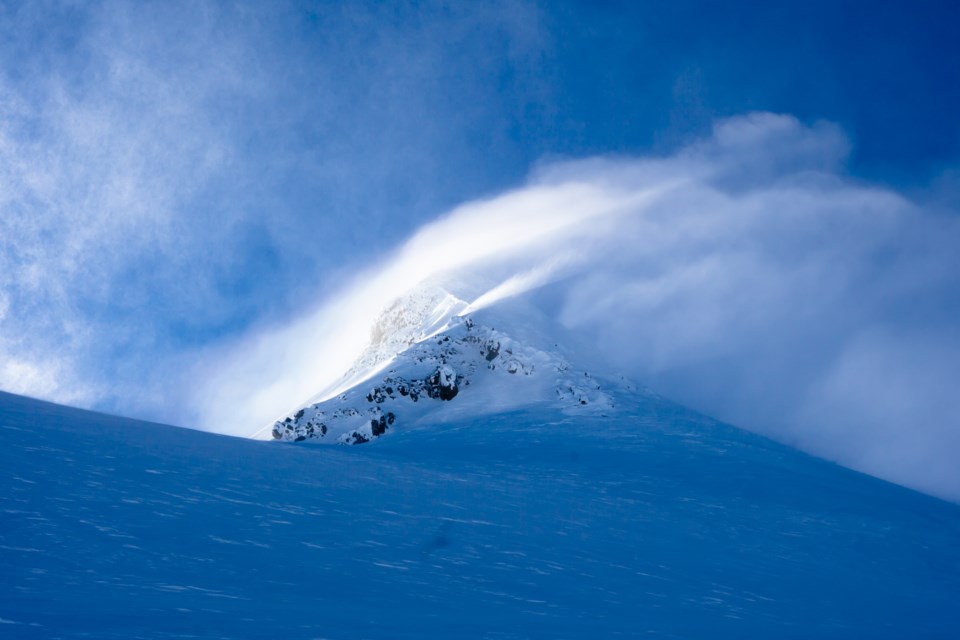When you start ski touring, it’s all about skiing powder. After your experience broadens and your eyes open to new possibilities, ski touring starts to get a bit more serious. The terrain gets more complex with avalanche risk, fall exposure, glacial crevasse danger, or a combination of the above. The tools, skills and know-how you need to get where you’re going rapidly snowballs.
Ski mountaineering has grown into an ambiguous term. There’s the “skimo” racing element to the sport, which is about speed, spandex, incredibly lightweight gear (that skis downhill terribly) and a heart rate that would have most of us keeling over. And in case you weren’t aware, skimo racing will make its Winter Olympics debut at Milano Cortina in 2026, so the backcountry can finally feel like it’s getting the mainstream recognition it never wanted.
The recreational arm of ski mountaineering uses light gear, but gear that skis downhill a lot better. Speed is less against the clock and more against the environment, such as making it back to the car before the headlamps come out, or getting to the slope before it warms up and destabilizes.
One of Pemberton’s old guard of ski mountaineering, Johnny “Foon” Chilton, once described his experience of the sport as (and I’m paraphrasing here), “we saw the mountaineers climbing peaks and walking back down. We thought we could climb the same peaks and ski back down.” More comically, I’ve read prominent ski mountaineers refer to their sport as “peeing in exotic places” and “paying a whole bunch of money to travel somewhere very far away to ski less.”
Foon’s description is bang on. If you’re using real climbing skills and tools with skis on your back, you’re most likely ski mountaineering.
My tale of the overstoke as it relates to ski mountaineering, like most of these tales, happened early on in my touring career. I was hungry to tick off objectives and wanted to build an impressive resume for future expeditions. The mountain I had my eye on was the 2,783-metre Mount Matier, the tallest peak in the Joffre group northeast of Pemberton. I had already turned around twice from the peak on separate trips; once from a scary whoompf that signalled slope instability, the other a fierce wind event that would blow any would-be mountaineer off the ridge to meet their maker. Third time’s the charm, or so I thought.
The weather was looking more than ideal and I’d teamed up with someone I worked with at the time, though we hadn’t ski toured together before (first flag in my 20/20 hindsight). We toured to the nearby hut the afternoon before and spent the night comfortably, rising at an early hour to make sure we had ample time to gain the summit. We climbed the nearby Anniversary Glacier without issue and began the long boot pack up the ridge of Matier. What I realized at this point is that while my colleague had an ice axe, he didn’t have any boot crampons. This was back before all ski touring boots had rubber friction soles too, so it was basically like he was climbing in regular DIN-sole ski boots. I worked at an outdoor store at the time so I had all the tools I needed, but what I didn’t have was the experience to consistently make sound judgments.
We ascended the ridge with me out front, confidently stabbing my crampons into the snow and ice. My colleague was beginning to slow down when the summit came into view, just a few hundred metres away. Then, he stopped and would not go any further. He wasn’t comfortable with the exposure, the slippery soles of his ski boots probably not helping the situation.
I was livid. We had come all this way, we’d nailed the timing on the weather and the stability. We were so close, and he was refusing to take another step in my direction. I tried encouraging him to at least come to where I was about 10 to 15 metres further up the ridge. He wouldn’t. I began yelling at him, pointing to the summit and saying, “it’s right fucking there!” But he was adamant, and taking off to reach the summit on my own was something even I knew would have been too reckless in that moment. I eventually conceded, taking one last look at the summit before turning around and skiing back down the ridge we’d just spent hours climbing.
The fault we had as a party was in our pre-trip and in-field communication. We hadn’t been ski touring together before and we didn’t talk about our respective expectations on the day. We just thought we’d all walk up and ski Matier, with no Plan B, no trip plan, no discussion throughout the morning of how we were all feeling about the objective moving forward. The overstoke of getting to the summit became so obsessive I thought everything else was secondary.
I’ve had many successful ski mountaineering days since then and a couple of years later I returned to the stand on the Matier summit to ski its very impressive northwest face. After more experience and taking my AST 2 course, I became a lot more diligent about doing my homework before taking on big objectives, including clear communication with other party members. And I never lost my composure in the backcountry again.
Vince Shuley is now wise to his overstoke. For questions, comments or suggestions for The Outsider, email [email protected] or Instagram @whis_vince.




